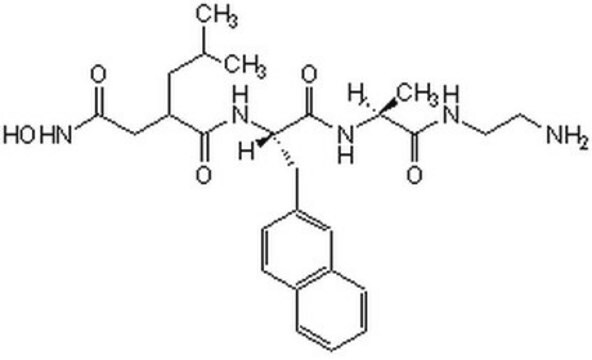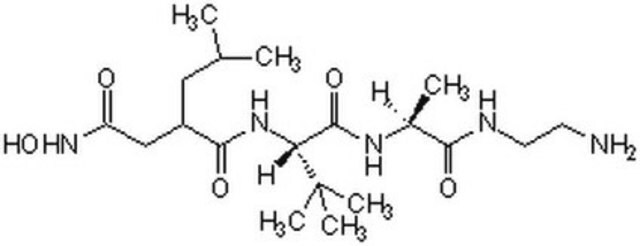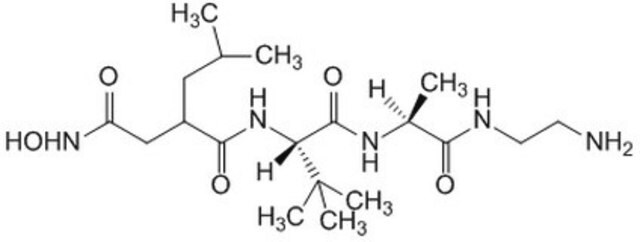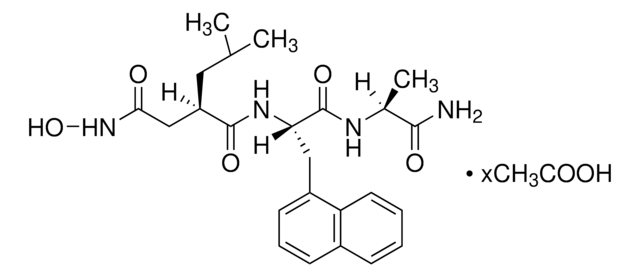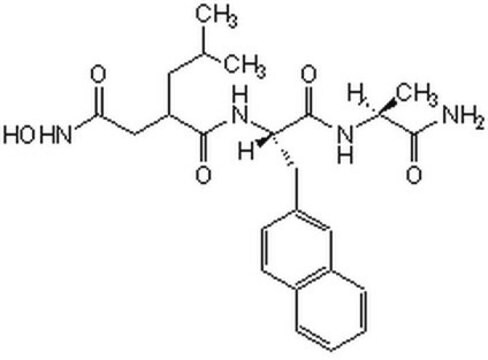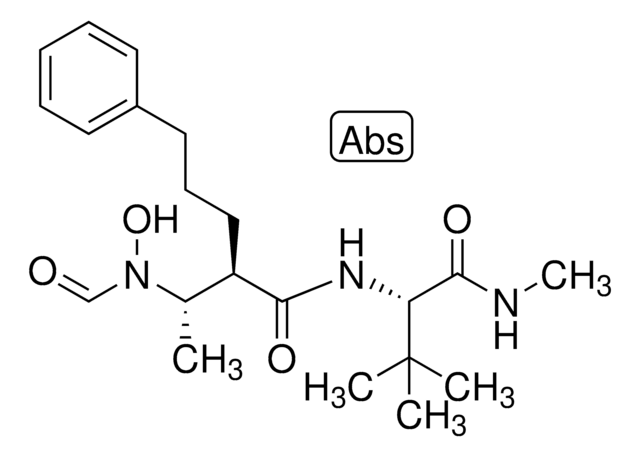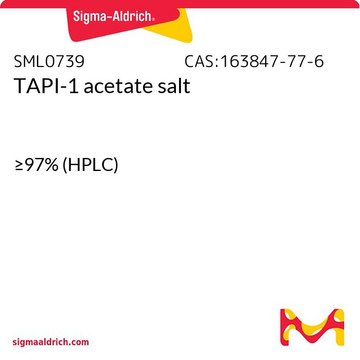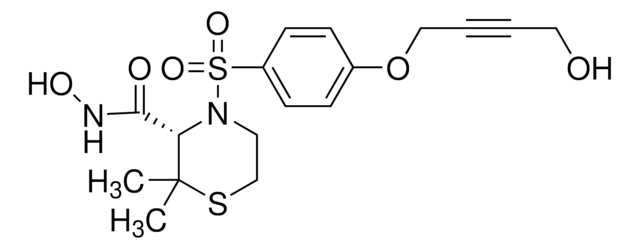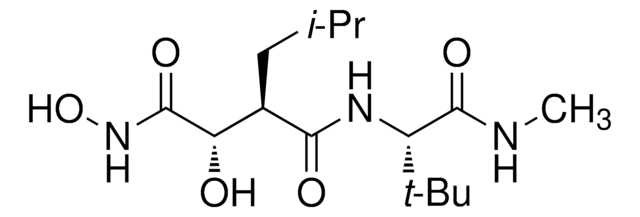579051
TAPI-1
≥97% (HPLC), solid, MMP, TACE inhibitor, Calbiochem®
Synonim(y):
TAPI-1, N-(R)-[2-(Hydroxyaminocarbonyl)methyl]-4-methylpentanoyl-L-naphthylalanyl-L-alanine, 2-aminoethyl Amide, TNF-α Protease Inhibitor-1
About This Item
Polecane produkty
product name
TAPI-1, TAPI-1, CAS 171235-71-5, is a structural analog of TAPI-0 with similar in vitro efficacy for the inhibition of MMPs and TACE. Blocks the shedding of several cell surface proteins.
Poziom jakości
Próba
≥97% (HPLC)
Postać
solid
producent / nazwa handlowa
Calbiochem®
warunki przechowywania
OK to freeze
desiccated (hygroscopic)
protect from light
kolor
white
rozpuszczalność
methanol: 1 mg/mL
DMSO: 5 mg/mL
Warunki transportu
ambient
temp. przechowywania
−20°C
InChI
1S/C26H37N5O5/c1-16(2)12-21(15-23(32)31-36)25(34)30-22(26(35)29-17(3)24(33)28-11-10-27)14-18-8-9-19-6-4-5-7-20(19)13-18/h4-9,13,16-17,21-22,36H,10-12,14-15,27H2,1-3H3,(H,28,33)(H,29,35)(H,30,34)(H,31,32)/t17-,21?,22-/m0/s1
Klucz InChI
AWNBSWDIOCXWJW-OWHMDLSXSA-N
Opis ogólny
Działania biochem./fizjol.
MMPs and TACE
Opakowanie
Ostrzeżenie
Rekonstytucja
Inne uwagi
Vincent, B., et al. 2001. J. Biol. Chem.276, 37743.
Hooper, N.M., et al. 1997. Biochem. J.321, 265.
Crowe, P.D., et al. 1995. J. Exp. Med.181, 1205.
Mullberg, J., et al. 1995. J. Immunol.155, 5198.
Mohler, K.M., et al. 1994. Nature370, 218.
Informacje prawne
Kod klasy składowania
11 - Combustible Solids
Klasa zagrożenia wodnego (WGK)
WGK 1
Temperatura zapłonu (°F)
Not applicable
Temperatura zapłonu (°C)
Not applicable
Certyfikaty analizy (CoA)
Poszukaj Certyfikaty analizy (CoA), wpisując numer partii/serii produktów. Numery serii i partii można znaleźć na etykiecie produktu po słowach „seria” lub „partia”.
Masz już ten produkt?
Dokumenty związane z niedawno zakupionymi produktami zostały zamieszczone w Bibliotece dokumentów.
Klienci oglądali również te produkty
Powiązane treści
Wybierz różne typy inhibitorów proteaz w zależności od potrzeb, aby zapobiec degradacji białek podczas izolacji i charakteryzacji oraz zabezpieczyć białka podczas przygotowywania próbek.
Nasz zespół naukowców ma doświadczenie we wszystkich obszarach badań, w tym w naukach przyrodniczych, materiałoznawstwie, syntezie chemicznej, chromatografii, analityce i wielu innych dziedzinach.
Skontaktuj się z zespołem ds. pomocy technicznej